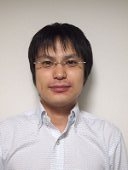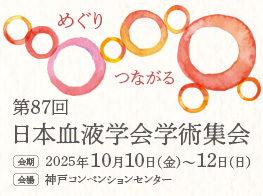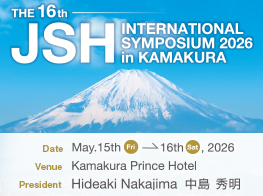
名前:小沼貴晶【千葉大学大学院医学研究院細胞分子医学】
発表日時:2011年6月12日 8:15~8:30
発表形式:Oral presentation (SIMULTANEOUS SESSIONS)
Title:
Forced expression of the histone H3K36 demethylase Fbxl10/Kdm2b maintains the self-renewal capacity of mouse hematopoietic stem cells
Abstract:
Post-translational covalent modifications of histone N-terminal tails are central to the epigenetic regulation of transcription, replication, and repair. Histone methylation marks contribute to transcriptional activation or repression depending upon the types and sites of modified residues and the degree of methylation. The methylation status of histones changes dramatically depending on cellular context and defines cell type-specific gene expression profiles. Histone demethylases have recently been implicated in this process. However, their roles in the regulation of hematopoietic stem cells (HSCs) remain poorly understood. To explore the relevance of histone demethylases in HSCs, we profiled the expression of 26 histone demethylase genes in mouse hematopoietic cells and found that F-box and leucine-rich repeat protein 10 (Fbxl10, also known as Kdm2b or Jhdm1b) is highly expressed in CD34-c-Kit+Sca-1+Lineage marker- (CD34-KSL) HSCs and CD34+KSL multipotent progenitors, but is markedly down-regulated during differentiation in bone marrow. Fbxl10 belongs to the jumonji C domain-containing histone demethylases and is a demethylase specific to histone H3 mono/di-methylated at lysine 36 (H3K36me1/me2). Fbxl10 promotes the proliferation and functions as a physiological inhibitor of senescence in mouse embryonic fibroblasts through repression of p15Ink4b and p16Ink4a. Based on these data, we hypothesized that Fbxl10 plays a role in the maintenance of HSCs and investigated the role of Fbxl10 in HSCs by conducting a gain-of-function analysis. CD34-KSL HSCs were transduced with an empty control or an Fbxl10 retrovirus and cultured in the presence of SCF and TPO. At day 14 of culture, although Fbxl10-transduced CD34-KSL HSCs gave no apparent growth advantage to cells, the percentage of KSL cells was 2-fold higher in the Fbxl10 culture than in the control culture. The total number of colony-forming cells (CFCs) derived from Fbxl10-transduced CD34-KSL HSCs was slightly increased in the 3.5-day culture compared to the control, but increased up to 2-fold in the 10-day culture. Morphological evaluation of the colonies revealed that the control and Fbxl10 cultures retained comparable numbers of colony-forming unit-neutrophil/macrophage/Erythroblast/Megakaryocyte (CFU-nmEM) with the potential for differentiation into multiple myeloid lineages at day 3.5 of culture while after 10-day culture, the Fbxl10 culture retained more CFU-nmEM than the control culture. These data demonstrated that forced expression of Fbxl10 in CD34-KSL HSCs expands CFCs with multi-lineage differentiation potential during ex vivo culture. Forced expression of Fbxl10 significantly repressed the expression of p15Ink4b, p16Ink4a, p18Ink4c, and p57Kip2 in KSL cells expressing Fbxl10. Chromatin immunoprecipitation assays confirmed the direct binding of flag-tagged Fbxl10 to the p15Ink4b, p19Arf, p16Ink4a, and p18Ink4c promoters and a significant decrease in H3K36me2 levels and a moderate increase in H2Aub levels at these promoters and gene bodies on forced expression of Fbxl10 in Lin-c-Kit+ cells. Competitive repopulation assays demonstrated that Fbxl10-transduced CD34-KSL HSCs prevents exhaustion of the long-term repopulating potential of HSCs following serial transplantation. We conclude that the histone H3K36 demethylase, Fbxl10, is a novel epigenetic regulator in HSCs, which plays an important role in maintenance of self-renewal capacity and multipotency of HSCs.
EHA congress 印象記:
第16回ヨーロッパ血液学連合(EHA)学術集会は2011年6月9日から12日にかけて、イギリスのロンドンで開催されました。参加者約9000人のうち74%がヨーロッパからでしたが、アジア、北米、南米、アフリカからの参加者も見かけられ、血液学に関連した学会では、米国血液学会ASHに次ぐ規模の大きな学会であると感じました。
2011年4月にはウィリアム王子の結婚式が行われ、2012年には夏のオリンピックが開催予定であるロンドンは、東京と同様に地下鉄が張り巡らされ、観光客も多く、治安も比較的よく、活気にあふれた世界屈指の大都会でした。学会は、ロンドン中心部の東側、テムズ川北岸にあり、中心部からは地下鉄で30分ほどのところにある巨大展示場、Excel Londonで開催されました。
EHAのプログラムは、1日目は企業が共催するsatellite symposium、2日目がeducation sessionとposter session、3日目と4日目が一般口演とposter sessionとなっていました。3日目には、日本血液学会とEHAのJoint symposiumが行われ、赤司浩一先生による白血病幹細胞に関する最新の知見についての講演が行われました。演題全体の印象としては、基礎研究よりも臨床試験や臨床検体のゲノムワイド解析の結果の報告が多いと感じました。
私は、エピジェネティクスを介した造血幹細胞の自己複製制御の解明を研究主題としていますが、本学会において、ヒストン脱メチル化酵素Fbxl10の造血幹細胞の自己複製維持機構に関する口演を行いました。造血幹細胞の報告としては、education sessionではオランダのde Haanが、マウスモデルにおいてポリコーム群であるCbx7とCbx8は、造血幹細胞の自己複製には相反する機能を有し、Cbx7の強制発現単独で急性白血病を発症することを報告し、ポリコーム群による造血幹細胞制御の最新の知見を得られました。また、白血病幹細胞の報告としては、この分野において著明な研究者であるイギリスのVyas、アメリカのMajeti、Reyaなどの口演を生で聞くことができ、非常に勉強になりました。
私自身のことになりますが、海外の学会での英語による口演は今回が初めての経験でしたので、大変緊張しましたが本当によい経験となり、今回EHA Travel Awardをいただいて学会に参加させていただいたことを大変光栄に思うと同時に、今後、より多くの若い研究者、臨床家の方々がEHAに参加してくださることを願っています。
最後になりますが、このような機会を与えてくださった日本血液学会の皆様、また、ご指導頂きました千葉大学医学研究院細胞分子医学の岩間厚志教授およびその他研究室の皆様に心より感謝いたします。



